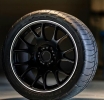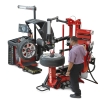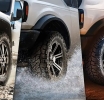Mythes et Facts

Although this article appears at the start of summer — a season typically focused on summer tires — our topic is actually the sale and installation of winter tires. For most tire retailers, the summer tire season is already behind them. In fact, it’s already difficult for a tire dealer to get a set of common summer tires, even for a good customer, unless there’s still ample inventory in local distribution centres.
Moreover, by the time you read this, there’s a good chance that major tire manufacturers are already gearing up to produce winter tires for the coming fall. And that season — just around the corner — will once again bring the annual rush for new products... as it does every Canadian autumn!
Of course, the most professional shop owners will have already advised their customers that, if the opportunity arises, they should consider buying new winter tires (alas, we all know they’ll wait until the last minute, right?). And if some of your “regulars” have recently shown you their new car, it would be wise to remind them that now is the time to place their winter tire orders (if they haven’t already). This is especially true for customers who have purchased some of the most popular vehicles on the market. They won’t be the only ones looking to get winter tires for their new ride. And because they’re not the only ones, the most in-demand tire sizes will soon sell out! A few years ago, my daughter had just leased a Saturn Ion. It was November. Finding reasonably priced winter tires for this small sedan was almost impossible at that time — especially because the Ion was very popular and required tires with near-unique dimensions. Fortunately, thanks to a very professional (and dedicated) retailer, we found four — in Alberta (while we were in Quebec!).
Whether you like it or not, most of your customers (some of whom might be reading this article while waiting for their car in your shop) know NOTHING about tires. All they know is that a set of tires becomes necessary at some point — and that’s especially true in winter. To them, a tire is a big, round, black, smelly thing that costs a lot. So, the cheaper it is, the better (just watch their expression when you quote the price!). The hardest part is convincing them that their lives — and the lives of their passengers (especially children) — rest on just four palm-sized contact patches where the tires meet the road. Tell them: “Think about that when you’re driving at 110 km/h.” A cheap tire? Sure... but is it as safe and reliable as a quality product? Especially at 110 km/h?
Watching Tire Pressure...
Another tip: don’t hesitate to show your customers how to “read” a tire. Here’s a recent situation I encountered. A friend of mine — a car guy, no less — showed me the tires on his small SUV. He wondered if it was time to replace them. The tires on his Hyundai showed significant wear in the centre of the tread. I asked if he checked his tire pressure regularly.
He said yes, proudly telling me he always inflated them to the maximum pressure indicated... on the tire! No surprise they were worn down in the middle — they were overinflated! I explained that the true recommended pressure is shown on the label inside the door jamb. He replied, “Why didn’t my mechanic tell me that?” (In fact, he should’ve read it in the owner’s manual, usually stored in the glove box!)
The Best Tires Go on the Rear...
Finally, one of the most persistent myths is that the best tires should go on the drive axle. But — as we've said time and time again — the best tires should ALWAYS go on the REAR of the vehicle! I recently got a call from someone who doubted their mechanic’s advice. The mechanic insisted on putting the new tires at the front of the sedan because it was front-wheel drive. The intention may seem logical, but automakers and tire manufacturers clearly advise (and it’s not a suggestion!) that the best, least-worn tires go on the rear axle. That’s because up front, the driver can use steering to regain control. But at the rear? There’s no such control. That’s where the better tires can help maintain grip and prevent a skid from turning into a spin.
Everything described here may sound repetitive or even obvious. Maybe you already knew these tips. But your customers? Most are not automotive experts — and certainly not tire experts! So, they need to be told... or reminded!


 En
En  Fr
Fr 





